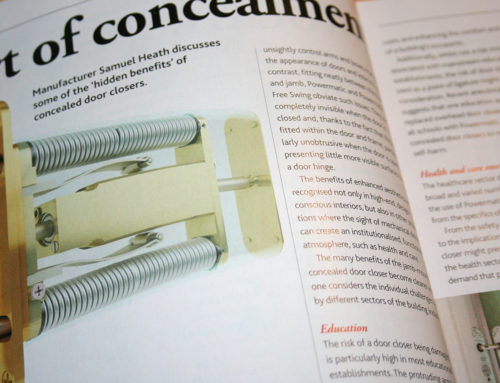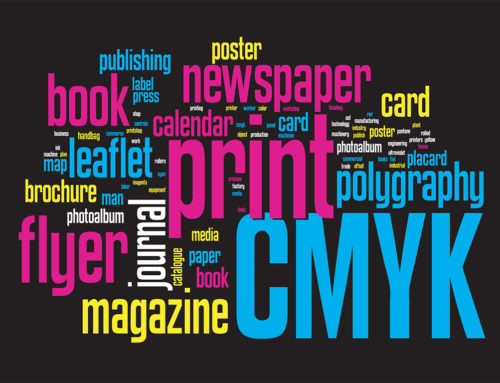We have, perhaps, become too seduced by the certainty and precision that technology promises; most of us are used to creating a document on our computers and publishing the results in some way, whether printing as hard copy or producing a PDF for electronic dissemination.
Generally, we expect the end results to reflect our efforts and meet our expectations, but even here we know that things can go awry; toner cartridges can run low, resulting in poor reproduction, and data can be misinterpreted or omitted from PDFs.
In our personal lives, and in some areas of our professional operations, such vagaries can be frustrating and inconvenient, but more often than not we can live with them and accept them for what they are.
In the design world, however, even minor imperfections cannot be tolerated, given that a company’s image and reputation rests on the quality of its presentations.
Creative concepts and stunning designs can fall flat unless careful consideration is given to the way in which they are to be delivered. Getting it right relies on appreciating the potential, and limitations, of the various methods of delivery and production techniques used.
Start right
From the initial brief, it is essential for the designer to know whether a particular design is intended for hard (printed) or soft (electronic) production, or both.
Formats may need to be adapted to suit the delivery methods; for example, electronic presentations need to conform to popular screen formats (generally, landscape), whilst hard copy printing can vary according to the media selected; brochures, catalogues, leaflets, banners, posters, exhibition displays and the like can be virtually any size and shape.
Colour systems also vary; lithographic printing employs the CMYK (Cyan, Magenta, Yellow and Black) colour model, whilst electronic media adopts RGB (Red, Green and Blue). Similarly, the way in which the eye receives the information can have an effect on the colours used: Hard copy relies on reflective light, which results in a more subdued colour rendition, whilst electronic media uses transmissive light, which delivers more vibrant colours. Designs, colour selection and origination need to take all of these factors into account in order to achieve the desired end result.
Production systems further complicate the process; screen printing uses different inks to lithographic printing, absorbent paper stock can affect definition, roller pressure on a printing press can affect colour reproduction, different types of screen can deliver different results… the list is endless.
There will often be compromises to be made, but the savvy designer will appreciate what these compromises are, will advise the client accordingly and will be able to minimise their effects by adopting design principle that take production methods into consideration.
Pre-production
Once designs are agreed, the pre-production stages can begin in earnest, with the process moving to what has traditionally been termed ‘artwork’. This is where the designs and layouts approved by the client are translated into a format that can be used by the final production method.
Again, knowing the ultimate delivery vehicle is essential to assuring the quality of the final presentation.
Other than the colour differences mentioned earlier, one of the biggest concerns has to be the quality of photography.
Firstly, there is the colour balance, contrast and resolution of images: Brochures, catalogues and leaflets demand higher resolution images than electronic media. In addition, internet delivery is faster when image file sizes are contained. The situation is, however, changing rapidly as bandwidths increase and screen resolutions improve.
Additionally, whilst we hate to spoil anybody’s ambitions, owning a digital camera (even a ‘good’ one) does not qualify anyone as a photographer. Mobile phones, iPads and other electronic capture devices fall into the same category!
A professional photographer earns their living because they are professional; they know how to compose a shot for best effect, appreciate the subtleties of lighting and can cope with a variety of challenging subjects, products and situations. Please use them!
Believe us when we say that it will be money well-spent!
Talk to the professionals
These pitfalls can be overcome by engaging a professional design company, with qualified and experienced graphic designers.
Yes, it does cost money, but the bitter taste of poor quality lasts a lot longer than the sweetness of a low price.
Professional design studios will ensure that everything is in place from the very start. Designs will not only meet the client’s brief, but will also take account of the final delivery methods, so that the client is not presented with something that cannot be achieved. Responsible graphic designers will also take account of potential costs, ensuring that the realisation of a design will not exceed a client’s budgets, or at least that the client is aware of the likely costs during the decision-making process.
During the pre-production process, the graphic design studio will be responsible for quality control, ensuring that images, illustrations and other origination materials are to the highest standards, will meet the requirements of the ultimate production process and guarantee customer satisfaction.
Mistakes during any part of the design, origination and artwork processes can cause delays and incur considerable expense. Placing them in the hands of a professional graphic design house obviates these risks and relieves the client of the responsibility for failure.
Professionally designed, written and produced, the final item, whether a printed brochure, website or point of sale display, assures a professional presentation of your company. When first impressions count, getting a professional graphic design team on board can pay real dividends.





